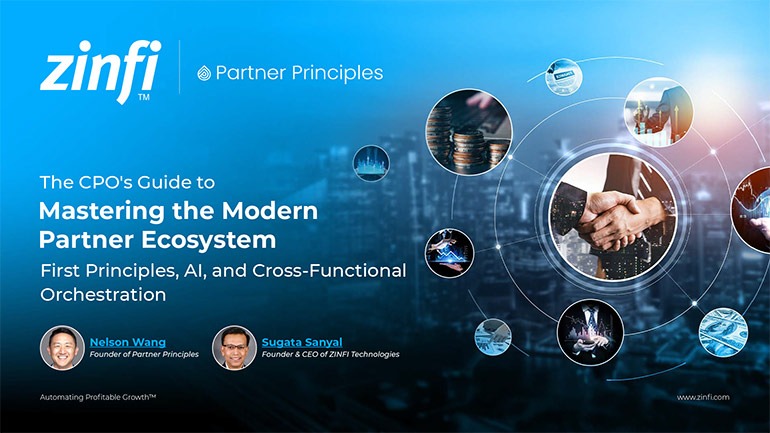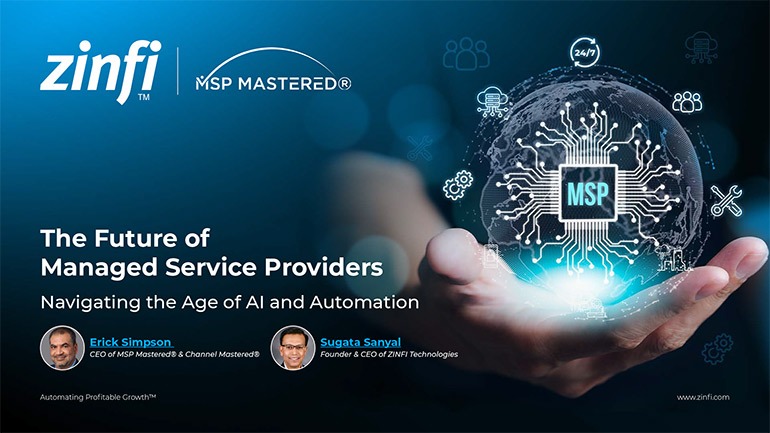Best Practices Articles

How to Streamline Partner Onboarding Using PRM Software
Most organizations selling through a channel don’t realize that partner onboarding is not a one-time event but an ongoing activity. This is where partner relationship management software, or PRM software, can greatly help. The purpose of PRM software is to automate four core workflow activities related to partner recruitment, partner engagement, partner enablement and partner management. The major step between partner recruitment and partner engagement is proper onboarding. In this article, we will explore how PRM software can significantly streamline this onboarding activity.
Before we explore in detail how PRM software can accomplish this, let’s start with a basic question: What is onboarding, and how can it impact your partner base? Wikipedia defines onboarding as “the process of bringing a new employee on board, incorporating training and orientation.” Pretty comprehensive—right?
When we apply this to channel marketing, “employee” would refer to employees from the partner organization across marketing, sales, technical and support areas. Since a channel partner is essentially an indirect sales and services organization, getting partner employees on board, trained and oriented to a vendor program is incredibly important in order for the partner to be able to sell successfully. PRM software can play an essential role in these three core areas—onboard, train and orient.
With this as a backdrop, let’s take a look at how onboarding existing partners is different from onboarding new partners. Then we will discuss how PRM software needs to be able to adapt to a broad range of onboarding-related circumstances. We’ll start with the process of recruiting and onboarding new partners.
-
New partner onboarding – When it comes to onboarding a new partner, the process of engagement starts with partner recruitment campaigns and programs. (While we will not discuss how to drive partner recruitment here, there are multiple articles on the ZINFI website that you can explore on partner recruitment using PRM software.)Let’s assume for the moment that a partner has been recruited, and has been invited to the partner portal to log in and start filling out a new partner agreement form. This is almost always the first step for new partners. Once a partner logs into an existing partner portal, the PRM software needs to be able to show only the forms and contractual agreements that are relevant for this particular partner. That means if a vendor has different agreements for different types of partners distinguished by various competencies or verticals, or by the nature of business they are in—and has different forms that reflect those differences—then the PRM software needs to be intelligent enough to differentiate one partner from another and provide only applicable contracts.Now, once this new partner has signed forms and applied, the partner will have to be approved by the vendor organization, and that may involve various cross-functional teams, such as channel sales, channel operations, channel marketing, marketing, finance and, in some cases, even human resources. If the contract is being modified by the partner, perhaps because it is a very large organization, then legal may also have to be involved.It is almost impossible to manage this process manually using simple email and office software like Word. PRM software not only streamlines this activity significantly, but also keeps a history of all changes. This kind of documentation—which can capture the entire contract negotiation process digitally—may become important later for a variety of legal reasons and historical verification purposes. If your organization should ever need to refer back to what you have agreed upon with your new partners, all of these back-and-forth conversations (as well as the intent of the partnership) will be fully captured in digital form, even if there are personnel changes in the interim. Without PRM software you simply cannot do that.Once a contract is signed, which is the first basic onboarding step, your organization will very likely authorize multiple users from the partner organization to start interacting with a number of your employees. These engagements will often happen across marketing, sales, technical, support, finance and may be even legal departments. For example, there may be project-specific contract development that requires you and your partner organization to work together in the future. But for now let’s focus on the next step – which is business planning. Again, PRM software will play a critical role, in this case providing a dynamic interface and engagement management capabilities.In the business planning phase partners need to figure out exactly how they will sell and incorporate the vendor’s solution into their go-to-market portfolio. On the vendor side, channel sales, channel marketing and channel operations will all need to interact with this partner. That means your PRM software has to be able to enable cross-functional access via the partner portal to make this dynamic business planning process work.
Gone are the days when you could simply fly over and meet your partner base and work things out in person on pen and paper. We live in a digitally distributed world now, and we all have to work through email, web conferences and various other means. Yet at the end of the day you and your partner have to capture go-to-market plans that incorporate marketing, sales, technical and support activities, but also establish hard financial targets and commitments. This is not a science project; it has a direct impact on your top and bottom line. Therefore, it is essential that you have state-of-the-art PRM software that is designed specifically to enable, organize and manage this entire complex planning process.
When the contract is signed and the partner has assembled a basic business plan specifying what they will sell and how, then the next step is to focus on training to make sure the partner organization is functionally capable of marketing, selling, fulfilling and serving. It’s a lot like new employee orientation. Ideally, all functional training will be rolled out using a fully configured learning management system (LMS). Again, PRM software plays a critical role, making sure the partner has personalized access to relevant training materials and will be guided through the competency development process step-by-step.
It is not just the partner who will need access to LMS, but also the entire channel operations team supporting the partner organization. Most vendors go through enormous amounts of content updates and changes on a weekly, monthly and quarterly basis. Just as the partner base needs regular training to be able to successfully sell vendor products and services, the vendor’s own employees also require access to those same training and certification modules to make sure their own competencies stay on a par with, or ahead of, the partner base.
Once a partner has gone through contract signing, planning and training, they are now ready to join the existing partner pool to start marketing, selling and serving the new client base. Of course, state-of-the-art PRM software can automate a lot more than the processes related to contracts, business planning and training, but since we are focusing our conversation here on new partner onboarding, I won’t go into that here. Instead, let’s turn our attention to the next category of partners: the existing partner base.
- Existing partner onboarding – Too often organizations actually neglect to apply the framework of onboarding to an existing partner relationship. There are various reasons for this, but the most common reasons we see are related to the absence of a solid partner relationship management process with the right infrastructure and structured programs. Let’s address these reasons and see how PRM software can help.When you think holistically about onboarding according to the definition we began with—“the process of bringing a new employee on board, incorporating training and orientation”—you are forced to recognize that change is constant in any organization, including partner organizations. In your own organization, marketing, sales, support and technical people are changing constantly. It’s no different for your partners. While you may not need to create a broad partnership agreement between your organization and a partner every time the partner hires a new employee, it’s likely you will need that new employee to sign a non-disclosure agreement and/or other forms that apply at the level of individual personnel level. Also, it’s quite likely you will need to train every one of those employees based on their functional expertise, and stair-step them through the competency development process just as you did when the partner organization first signed up to sell for you.In addition to new employees joining partner programs, you also have new products, programs and promotion launches almost every quarter—perhaps even multiple times a quarter. How do you ensure all your partner employees are fully aware and trained on these?Over and over we have seen that the vendor organizations that take a systematic approach to onboarding are best-positioned to manage change and help their partner base adapt to those changes. When such vendors introduce new products, programs and promotions, they are able to drive adoption of those campaigns more effectively, leading to better sales outcome and ROI. However, without a structured onboarding process designed to help existing partners understand new products, programs and promotions, your campaigns may fall completely flat. Again, properly deployed PRM software can significantly streamline and enhance your ability to execute new programs across the partner base.This dynamic onboarding and training process never really ends, since partners are constantly dealing with new employee onboarding themselves, and your organization is constantly rolling out new initiatives. PRM software is critical in managing this process so that your organization knows which partners are at what stages of success, and what is really working or not. Without this intelligence, your channel and corporate team members are truly working in the dark and they won’t be able to make the necessary changes to optimize results.
When you step back and think about partner onboarding as a holistic process and initiative, you can clearly see you are never really done. While the journey begins with signing up a new partner to sell a vendor’s products and services, many onboarding activities are repeated in different contexts and for different individuals, whether they work for new or existing partners. Your organization’s ability to streamline these activities across the partner base by geography, level of competency, business lines, and other variables may be the difference between success and failure. These variables create considerable complexity, but that complexity can be mitigated by adopting a partner relationship management (PRM) framework and deploying automation via PRM software.
When an organization does deploy PRM software, we see substantial increases in channel productivity. Such improvements have also been reported by various leading industry analyst firms. This is not just good karma we’re talking about: it also impacts both your top and bottom line in a very good way.
Well, maybe it is the result of good karma. That’s something to think about….
Best Practices Guides
 First Principles Drive Modern Partner Ecosystem Success Best Practices
First Principles Drive Modern Partner Ecosystem Success Best PracticesDownload for FREE
 The Future of Managed Service Providers: Navigating the Age of AI and Automation
The Future of Managed Service Providers: Navigating the Age of AI and AutomationDownload for FREE
 Modernizing Channel Marketing: AI and Ecosystem Enablement Best Practices
Modernizing Channel Marketing: AI and Ecosystem Enablement Best PracticesDownload for FREE
 The Channel’s Shift to Partner-Led With AI Best Practices
The Channel’s Shift to Partner-Led With AI Best PracticesDownload for FREE
 Hyperscalers, ISVs, and AI: Shaping the Future of B2B Software Distribution
Hyperscalers, ISVs, and AI: Shaping the Future of B2B Software DistributionDownload for FREE
 Definitive Guide to a Partner Ecosystem-First Sales Strategy
Definitive Guide to a Partner Ecosystem-First Sales StrategyDownload for FREE
 The Partner-Led Digital and AI Transformation Best Practices
The Partner-Led Digital and AI Transformation Best PracticesDownload for FREE
 Startup Talent Recruitment: Hiring Missionaries, Not Mercenaries
Startup Talent Recruitment: Hiring Missionaries, Not MercenariesDownload for FREE
 The Future of Partner Relationship Management with AI in Partnerships
The Future of Partner Relationship Management with AI in PartnershipsDownload for FREE
 Cybersecurity for the 99%: Strategies from the Frontline
Cybersecurity for the 99%: Strategies from the FrontlineDownload for FREE
 Mastering Partner Relationships: A Strategic Approach to Business Growth
Mastering Partner Relationships: A Strategic Approach to Business GrowthDownload for FREE
 Mastering Partner Relationship Management: Keys to SaaS Channel Success
Mastering Partner Relationship Management: Keys to SaaS Channel SuccessDownload for FREE